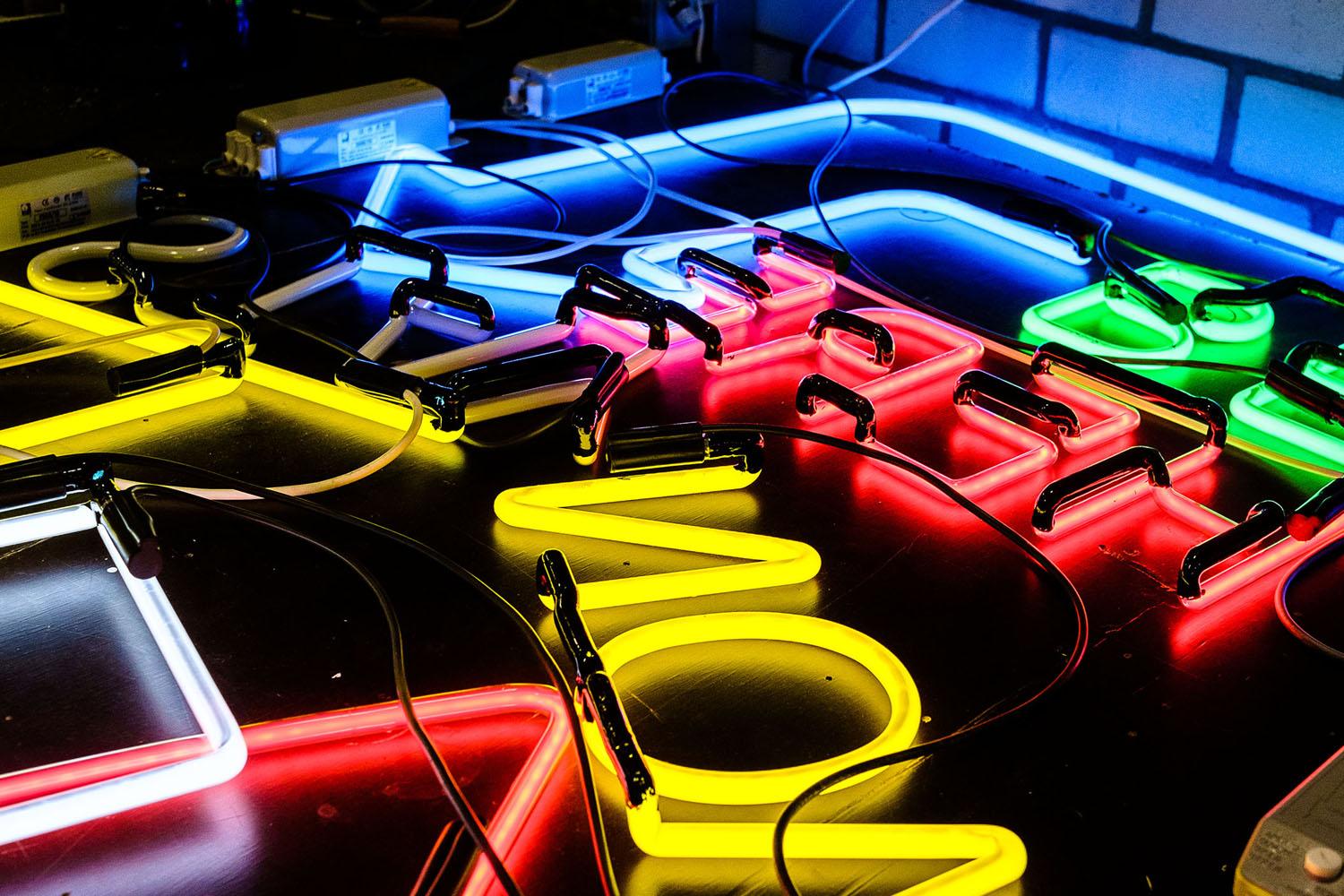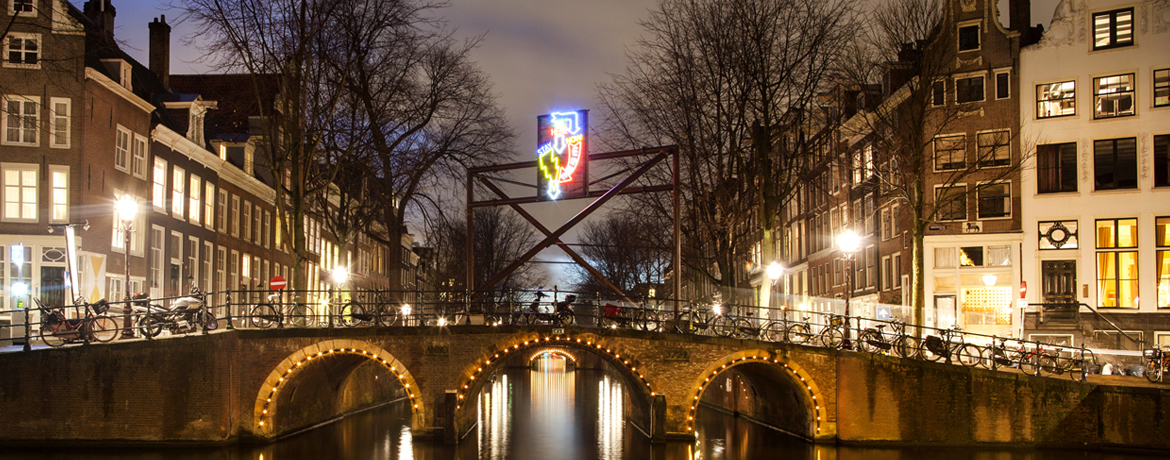Neon
"In 1856 a glassblower named Heinrich Geißler created the precursor to neon lights. He learned the profession of glassblowing from his father Georg."
In this series we will take a look at all the types of light sources across human history and show how artists have used each light source to make beautiful light art throughout Amsterdam Light Festival’s twelve editions to date. In this article we will discuss neon.
In 1856 a glassblower named Heinrich Geißler created the precursor to neon lights: the Geißler tube. Geißler learned the profession of glassblowing from his father Georg, who was an innovative glassblower. The electrodes strip an electron from the atom of the gas to create a closed circuit, which allows external energy to be applied to the gas atom. This pushes the atom into an excited state. Because the atom doesn’t like to be in an excited state, it releases energy to return to normal and this is how a photon of light is released.

Despite the fact that we call all lights of this type neon, they don’t all use neon gas. Different gasses release photons at different frequencies which give them their colour. Neon is red/orange, but other noble gases and chemicals are responsible for all the other colours we see in neon lights.
For Edition 3, Tropism presented the artwork This is it, be here now as an ode to the beautiful art of neon signing. During Edition 7 Jeroen Henneman made a limited edition neon desk lamp, called One Lamp.
